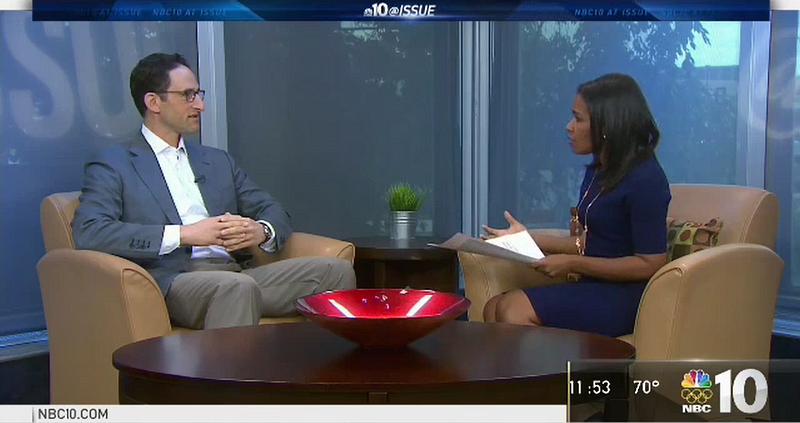How to ‘Tidy-Up’ Your Financial Life

By Adam Holt, CEO and Founder, Asset-Map
It’s no secret that for nearly every single one of us, getting more organized is a priority.
Look no further for proof of how important the art of organization is to us than the best-selling book “The Life-Changing Magic of Tidying Up” and latest Internet sensation, Tidying Up with Marie Kondo.
Organizational problems find us wherever we are — from being late to getting our kid to baseball practice because we lost our keys, to staying late at the office because you couldn’t remember your complex password for that login you seldom use (but need desperately).
Recent research found that as much as $89 billion dollars are wasted in office productivity from employees looking for misplaced items. The problem with clutter in our lives is real.
In the financial planning profession, organization is also of paramount importance.
To give the best advice to your clients, you have to help them get their financial house in order just like Marie Kondo helps her clients get their physical house in order. Here’s how.
Understanding Your Clients’ Financial Clutter
Almost all consumers acquire the financial accounts and assets they own over time, often over years and decades, in a process that mimics how we stack physical objects in our homes. And as I shared in my NBC interview, just like our home goods, financial instruments can come to be seen as little more than “clutter.” While they hold value, they’re also just hanging around barely in sight, unused and not thought about often.

NBC Anchor, Erin Coleman, interviews Adam Holt, Founder and CEO of Asset-Map about the importance of knowing what you have in your financial inventory.
If you want to begin helping clients unpack that financial clutter, you have to first understand what they have, and show them how what they own all fits together.
Sometimes, that unpacking process can be painful because a client may not want to let go of an account that no longer serves their interests. Ninety-percent of the time when I pull out something from my closet, it’s old, outdated, and doesn’t have a place in my life anymore. I’ve kept it around out of hope that it comes around back in style, or because of some misplaced nostalgia.
Financial instruments are not that different, and you have to approach them with a similar mindset.
The reality is that very little in our financial closet is there intentionally — in many cases, it’s almost haphazard.
What we keep in our financial closets will differ from person to person, but there are going to be some commonalities that help create a structured process. Your typical client might have an old 401(k) from a previous employer, an old savings account, or even an insurance policy sold to them by a family member they haven’t heard from in years.
So, how do you help clients pull their finances out from the closet to see what fits, based on what matters today, and what doesn’t?
Why Visual Clarity Helps Financial Decision-Making
I think there’s nothing more powerful than a simple visual representation to help clients see and understand everything they own. There is something about pulling your entire wardrobe from your closet the way that Kondo promotes and dumping it on the bed.
Asset-Map helps you put everything on one page so that all of a client’s finances can spread out on the table before you. This visual demonstration not only unveils the complexities inherent in every situation, but it also can help trigger your client to remember a long-forgotten account or policy.
Visually, each Asset-Map begins with the important people involved in a household by showing them across the top of the screen or page.
Too often, clients think only of their IRA or 401(k) account and don’t consider the family members affected by what they own. In addition to beneficiaries, visualizing all these relationships also shows who a client is dependent on — such as a business partner or parent they may inherit wealth from (or be responsible for), later on in life.
Laying out all of a client’s finances visually helps you to have more honest conversations about what fits and what doesn’t. For DIY investors, many have been assembling their financial picture with pieces from different puzzles that don’t fit with each other.
You can highlight what benefits them now, like current income streams, and also demonstrate how that combines with what may help them in twenty years, like pensions and social security benefits.
Laying out all of a client’s finances visually helps you easily identify what else is needed, or sometimes what’s obviously missing.
Think of it this way — if we can return to our unpacking analogy for a moment. It’s winter now, so if you look in your closet, you should be able to see that you’ve got a winter coat, boots, and hat. But what if you see no coat and six umbrellas? That ensemble won’t do you any good in a snowstorm.
Visually seeing every account, policy, stakeholder, and important asset together on a single page makes it easy and fast to make quick determinations about a client’s financial health, let alone wellness.
How to Improve Thinking Around Financial Organization
Finance is unique in that the assets we own don’t exist tangibly; we can’t pull out a security and hold it in our hands. Accounts are merely numbers on a computer screen or mobile device in some cloud.
Because it’s difficult for investors to see their assets as tangible, we need to communicate the idea of financial assets in a concrete way to help make an impression in a client’s mind.
One way to do that is to think of financial Instruments like physical containers. The boxes we use to build an Asset-Map are the containers of a client’s finances.
Each container has five points of data about the finances represented: What is it, where is it, what’s it worth, who controls it, and what’s the tax wrapper?
In our home, when we pack away containers we don’t have to unpack them to know what’s in them and determine their relevance. Putting a sticky note on top takes care of that; those sticky notes are what the top-line information is like on an Asset-Map container.
Of course, there are times when we have to open a box to go through its contents and have deeper discussions with clients, and we keep those details in Asset-Map for easy, quick reference so conversations can keep progressing towards decisions, instead of stalling out at a surface level.
Keeping a Financial House in Order
In the same way that we organize our homes, we also have to keep our financial house in order.
Using visualized maps of how each piece of a client’s financial life fits together can help you connect all those distinct elements into a cohesive whole, so you can help clients can make better decisions about what to keep, and what to throw out.
You may never ask a client if their financial instruments “spark joy,” but you can certainly help them assess how valuable those instruments are to their short- and long-term goals.
Ready to see how Asset-Map can help your clients visualize their finances and make better decisions about what matters most?
